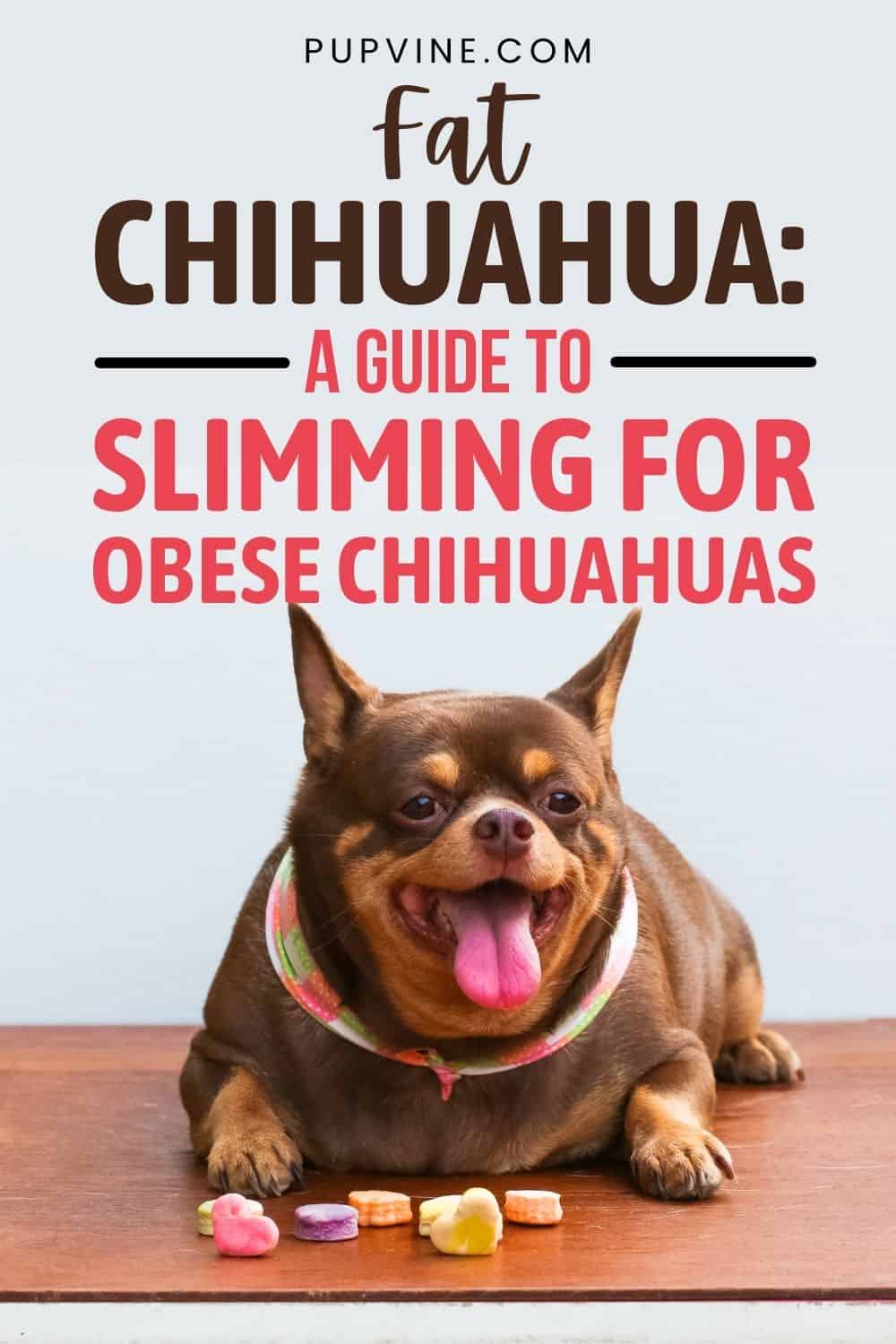Obesity is one of the most common health problems in all dog breeds and yet is often the most frequently ignored. Figures show that more than 56% of all dogs in America are overweight, which is a sobering fact.
Being overweight causes a wide range of associated health issues, potentially shortening a dog’s life expectancy.
But what about Chihuahuas? They’re officially the smallest dog in the world. Surely they don’t suffer from obesity? Do fat Chihuahuas exist?
Actually, they do, and it can have an extremely negative effect on their health. You may even own a fat Chihuahua yourself and are looking for advice on how to help your portly pooch lose weight.
Don’t worry! We’re here to help you, with a guide that explains how dogs become overweight, what the implications are, and what you can do to help them get back in shape.
We’ll begin with some background on the breed before launching into our quest.
The Chihuahua Dog Breed
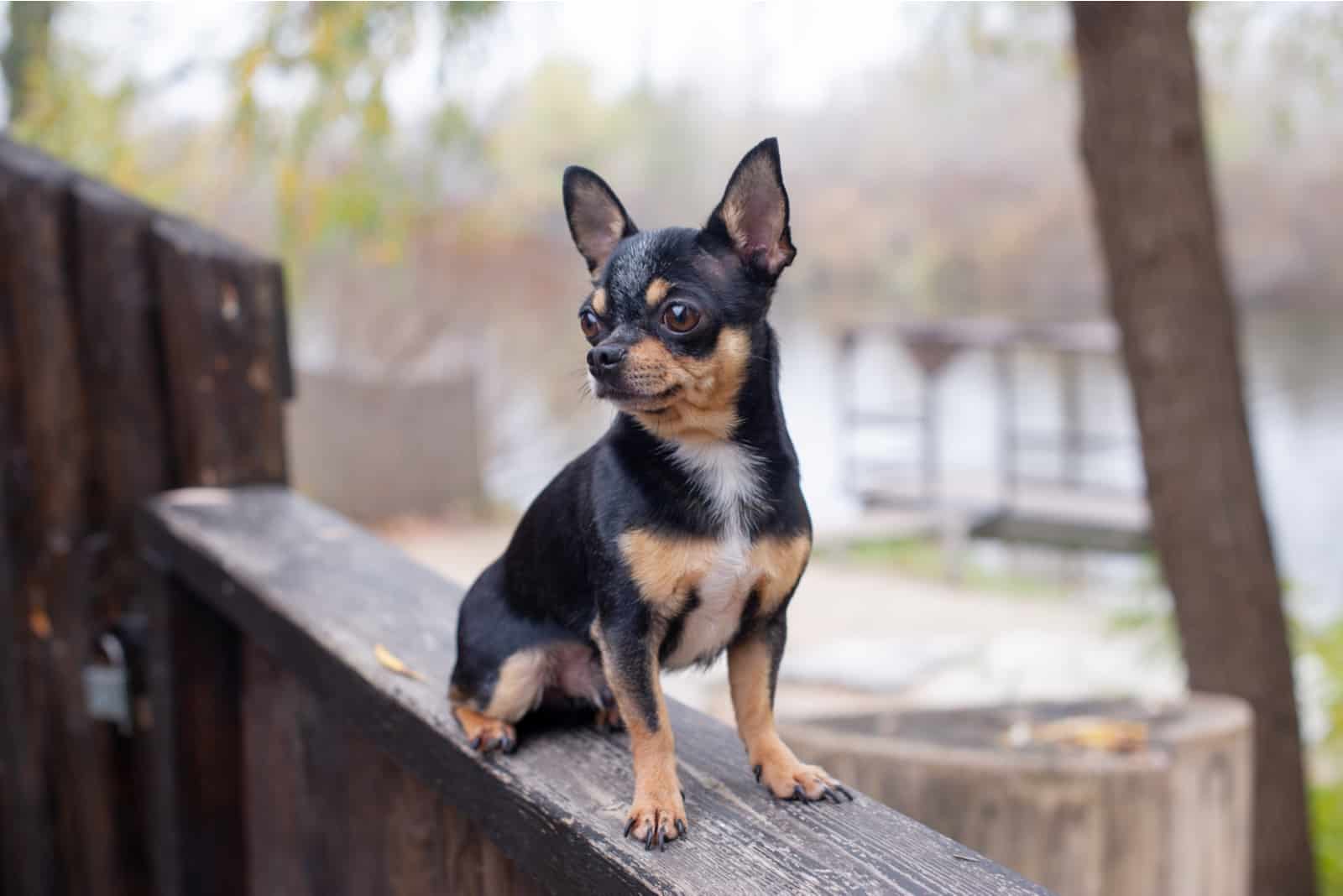
The purebred Chihuahua is classed as a toy breed, and it’s easy to see why! Whether male or female, they only stand between 7 and 9 inches high and weigh between 2 and 7 lbs. Few other breeds are anywhere near as tiny.
Like many other breeds, their history is uncertain. Some say that they had religious significance, while others suggest that they were used for food by Central American Indians! What we do know for sure is that they are named after the Mexican state, Chihuahua. Other than that, we don’t really know anything definite about their past.
The breed can be divided into two types: apple head or deer head. As you might guess, the names indicate the shape of the dog’s head. Other than the different head shapes, there is nothing to distinguish between the two, although the deer head Chihuahua is arguably the healthier of the two.
They also have two different types of coat; one is long and soft, the other short and smooth. These can be in almost any pattern or color you could wish for!
They are an energetic breed, but because they are so tiny, it doesn’t take much to expend that energy. Around thirty to forty-five minutes of exercise each day is usually enough to wear them out.
In terms of character and personality, they are alert, courageous, and entirely devoted to their owners. They are lap dogs but also enjoy being active.
Chihuahuas make great family pets, but with some caveats: they may snap at small fingers that pull them around too much, and they might show aggression when they feel threatened. They can also be quite vocal, like most small breeds, and they can be sulky at times.
Finally, they have a much larger personality than their tiny bodies would suggest. In fact, they seem to be completely unaware of their size. Make no mistake – they will try to dominate you unless you show them who’s boss!
That’s the Chihuahua breed in a nutshell. Now let’s look at the problem of fat Chihuahuas.
Why Is My Chihuahua So Fat?

There are several causes for dogs gaining excess weight, and we can separate these into the following categories:
• Overeating
• Lack of exercise
• Sickness
• Genetics
• Reproductive status
• Age
• Medication
While these seem pretty straightforward, nothing is ever that easy! It could well be that two or even three of these are causing the problem.
If you have a fat Chihuahua, it is probably linked to one of these problems in this list. And if you’re wondering why they’ve put on so much weight, then you need to go through the list to see which ones are the most likely.
We’ll examine these causes in turn to help you discover which one is responsible for your overweight Chihuahua.
Overeating
There’s one main culprit in many cases. As you might have guessed, that’s us. So it might be more truthful to name this section overfeeding.
We love our furry companions, and we like to spoil them. When they are hungry, we love to feed them well. And when they beg for treats, we want to make them happy.
This is all very well, but it can lead to weight gain depending on what we are feeding them and whether they are burning off more calories than they consume each day. A poor diet combined with a lack of exercise (see the next heading) will lead to weight gain, so check how much you are feeding your dog and look at what you are feeding them.
Only use high-quality dog food that isn’t packed with fillers. Opinions vary as to whether kibble or canned food is better, but both have their pros and cons. Many doggie websites will try to win you over to one or the other, but you need to keep your wits about you as some are being paid to promote a particular brand and will make bold claims.
The main thing to remember is that any food should be of good quality and given in sensible amounts, relevant to your dog’s size, age, and activity level. Most dog food packaging will have a guide to help you, or you can speak to your vet for more guidance on how much to feed your dog.
Now we come to one of the leading causes of obesity through overeating: human food.
A lot of the foods we eat contain fats, sugar, and carbs that don’t do our furry friends any good at all. Table scraps are among the worst, especially when they contain leftover cooked meats, sauces, fried foods, and so on. Some human foods will make our dogs sick, while others can be potentially fatal. Whichever way you look at it, feeding your dog table scraps is a form of slow poisoning.
Not only will you have a fat Chihuahua, but your pooch could also develop pancreatitis. Some dogs are already predisposed to this condition, making it even more of a health risk.
Despite being omnivores, the dog’s digestive system is not built to deal with the foods that we eat. For example, cookies are packed with sugar and carbs that overload the Chihuahua’s delicate system.
If you have been feeding your Chihuahua leftovers from the table, cookies, cakes, ice cream, or even feeding them too much dog food, now’s the time to change that!
Lack Of Exercise
As we said earlier, Chihuahuas need only around 45 minutes of exercise a day to use all that energy. They don’t need a lot of space, but they do like to stretch those little legs. Two or three short walks a day, maybe a trot around the yard, or even around your living room floor, and they’ll be happy to settle on your lap.
The trouble is, if they don’t get enough exercise, the weight will soon pile on. Dogs, much like humans, need to burn more calories than they consume. If this doesn’t happen, excess fat is stored in the body. A little fat isn’t a bad thing, but when it gets too much, it starts to affect the dog’s health in many ways.
Sickness
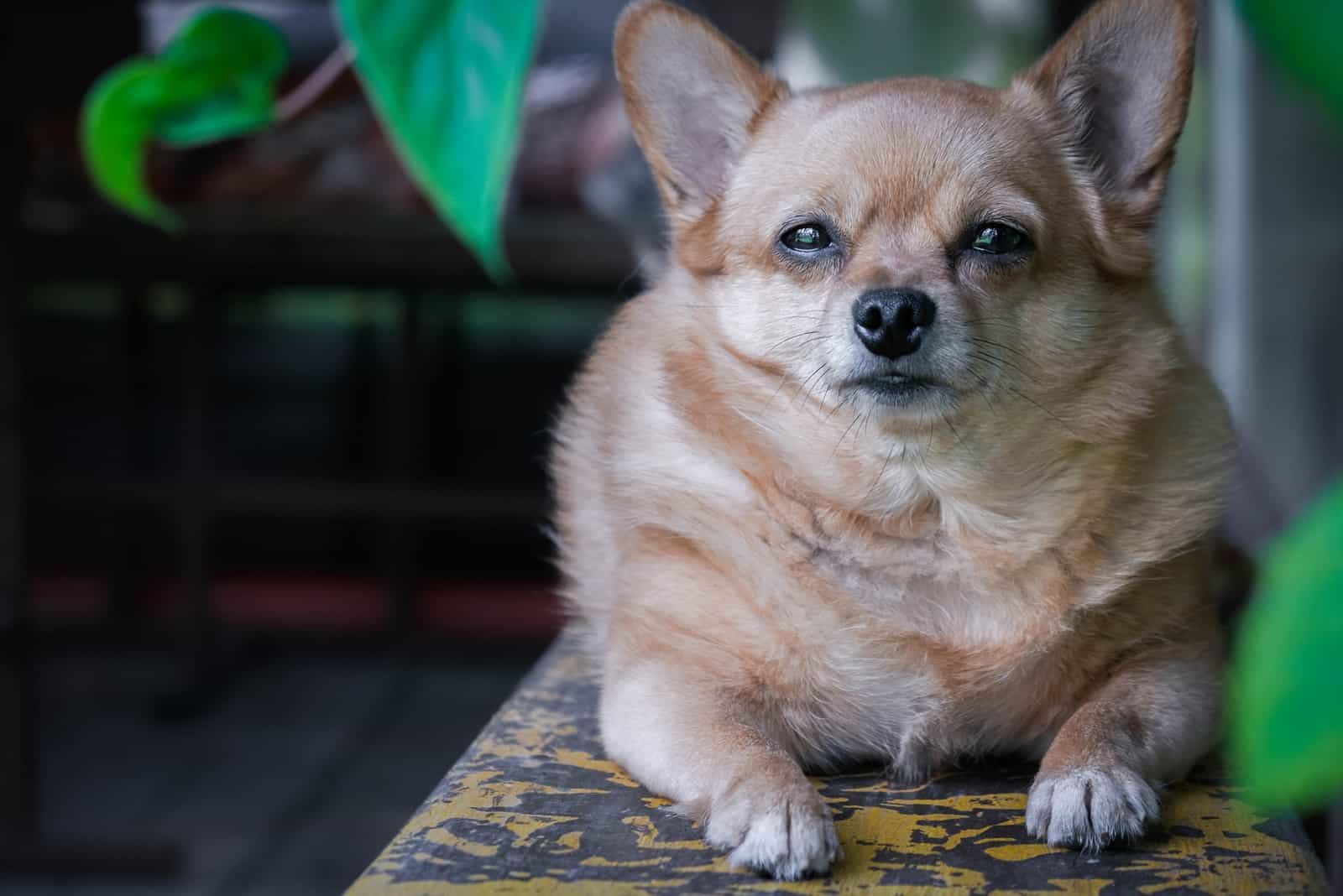
Certain diseases are known to cause weight gain and obesity in dogs. Two of the most common are:
• Hypothyroidism – is an underactive thyroid gland that doesn’t produce enough hormones to keep the body running properly. This leads to lethargy, weight gain, and changes to the dog’s coat and skin.
• Cushing’s disease – also called hyperadrenocorticism, relates to an overproduction of the ‘fight or flight’ hormone, cortisol. This hormone regulates sugar levels, fights infections, allows animals to respond to stressful situations, and controls weight.
Too much cortisol flooding the system will lead to an increased appetite and a decrease in activity, which will cause the dog to put on weight.
If you suspect that your dog has one of these conditions, you must get them examined by a vet immediately. The sooner they are diagnosed, the sooner you can begin treatment and set them on the road to recovery.
Genetics
Some breeds are genetically predisposed towards obesity. It seems that the odds are stacked against them, so they need extra care and attention to avoid becoming obese.
Research has discovered around 50 different genes that affect how fat is stored in the body, as well as regulating the appetite. Although more work is needed, the results suggest that some genes will significantly increase the chances of obesity. This risk increases even further when combined with other factors, such as a lack of exercise and overeating.
Reproductive Status
Many people mistakenly believe that spaying/neutering pups will make them fat. But there’s a good reason behind this misunderstanding.
Before pups reach maturity, they need masses of energy to develop properly. They will eat according to the energy levels they need, getting ready for the reproductive process to begin.
When they are spayed or neutered, the hormone levels drop, and they don’t need all that fuel for reproduction. On average, spayed/neutered dogs require 20% less energy than intact dogs. Most dog owners won’t take this into account and will continue to feed their pooch the same amount, so the dog will gain weight.
Age
As dogs get older, they often become less active and more prone to joint problems that slow them down. This can lead to weight gain, which only adds to the problem. The trouble is that people often continue to feed their dogs the same amount, regardless of age and activity level.
As the dog gets older and less active, it’s best to slightly reduce the amount of food to match their energy level.
Medication
Certain prescription drugs have been linked to weight gain in dogs. If your efforts to reduce your dog’s weight have been unsuccessful, the best thing to do is to speak to your vet about reducing or changing the medication.
All of these points listed here are valid causes of obesity, but it has to be stressed once again that overfeeding/overeating is the number one reason for dog obesity.
Health Problems Caused By Obesity
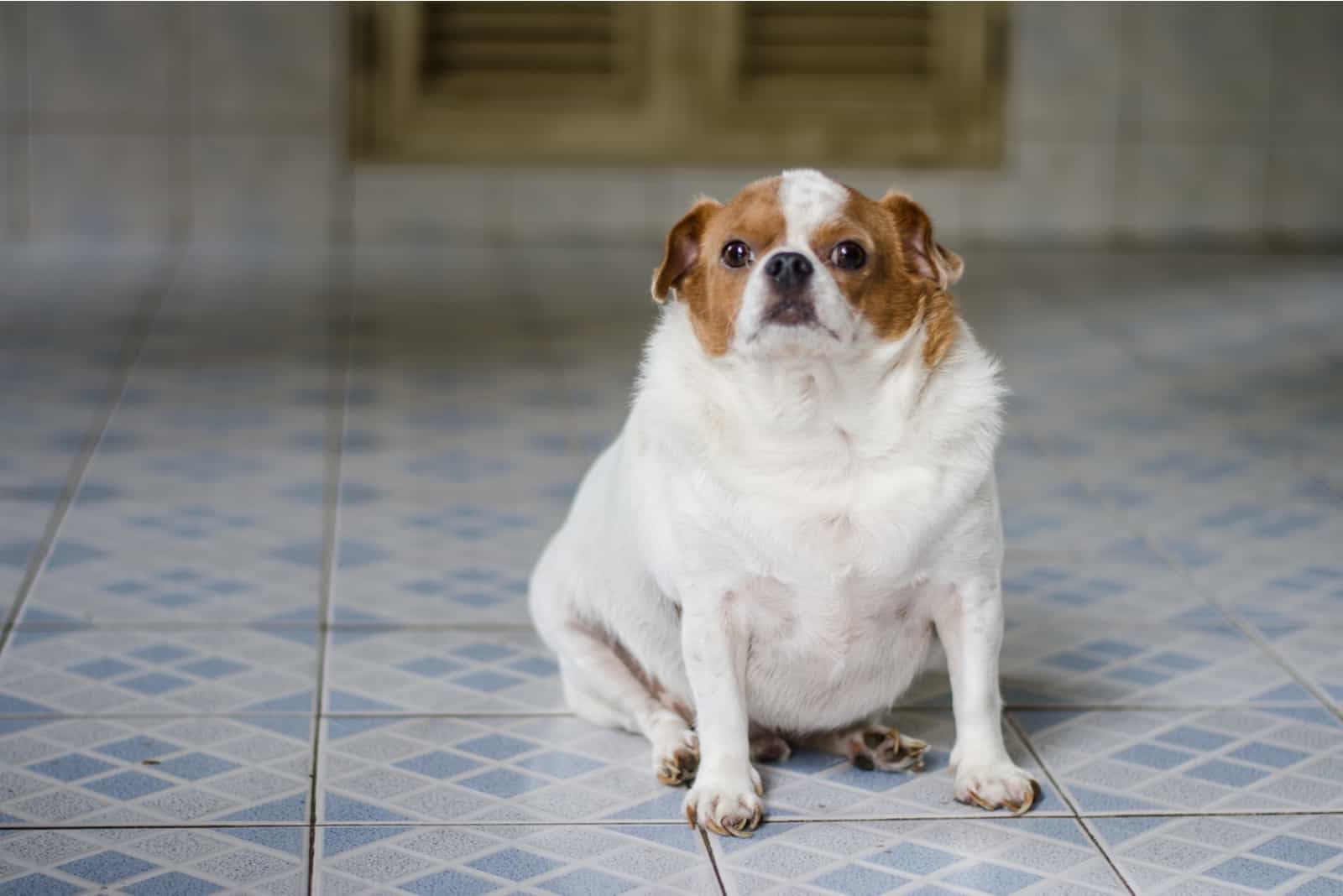
Despite the wealth of funny video clips, GIFs, and memes online featuring fat Chihuahuas, dog obesity is no joke. It can cause severe health problems and can significantly shorten a dog’s life expectancy.
Here are some of the ways that excess fat affects dogs:
• Heart disease – Chihuahuas are particularly prone to something called valve disease. This can result in heart failure if not treated.
• Spinal problems – extra weight puts pressure on the backbone, leading to slipped discs and other complications relating to the spine. This also puts pressure on the sensitive areas of the lower back, potentially resulting in fractured bones and torn ligaments. Tests showed this to be the case even in dogs that were only moderately overweight.
• High blood pressure – extra fat is known to raise blood pressure (Hypertension), putting more strain on the heart and vital organs. This can cause seizures, disorientation, blood or protein in the urine, circling (the dog is restless and keeps walking in circles), hemorrhage from the eyes or nose, heart murmurs, and general weakness.
• Type II diabetes – this often starts as hypoglycemia (low blood sugar) and can cause weakness, dizziness, and fainting spells. If it isn’t diagnosed and treated, it can soon become full-blown diabetes.
• Cancer – until recently, excess fat was thought to be inactive. We now know that this is not the case and that fat produces hormones that can cause disease, including various types of cancer.
• Osteoarthritis – obesity is probably the leading cause of arthritis in dogs, as it puts strain on the joints. This leads to more wear and tear, followed closely by inflammation. The problem is self-perpetuating, as the dog is unlikely to want to exercise as much, leading to further weight gain.
• Breathing problems – fat deposits in the chest and around the airways can cause difficulty breathing. In extreme cases, this can result in the collapse of the windpipe.
Incontinence – urinary incontinence is fairly common in spayed females, but obesity can add to the problem.
As you can see, a fat dog is nothing to laugh about.
Are Chihuahuas Supposed To Be Skinny?
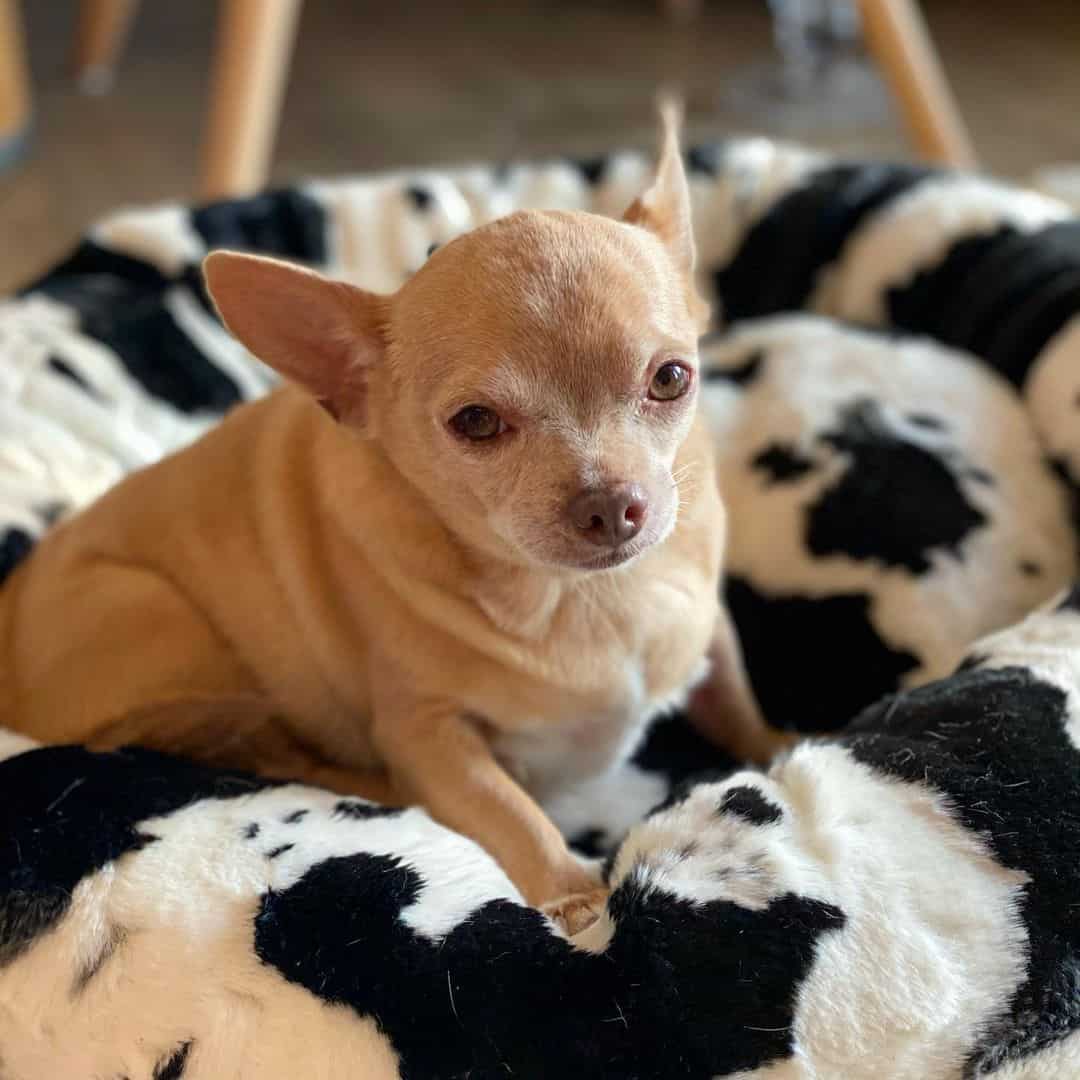
Photo from: @simon_aka_porky
No, they aren’t supposed to be skinny! An underfed and undernourished dog faces just as many health problems as an obese one. Small dogs are especially at risk, as they have a very fast metabolism. In cool weather, Chihuahuas lose heat rapidly. You will see them shivering and shaking to keep warm. An underweight dog will easily become too cold, raising the danger of hypothermia and dehydration.
The same checks apply to skinny dogs as obese ones: you should be able to feel the spine and the rib cage, but not see them.
If your little Chi is too thin, you should review their diet and seek advice from the vet.
Fat Teacup Chihuahua
Being overweight is bad for any dog, but for teacup versions, it’s arguably worse. Many miniature dog breeds already suffer from health problems because of their small size, including difficulty maintaining a healthy body weight.
Undersized Chihuahuas are not an official variation, but those weighing under 2 lbs are referred to as teacup Chihuahuas. Most will be underweight and will have trouble regulating their body temperature (which is why you see so many Chis wearing jackets), although it is possible that they can become obese. It is vital that you help them achieve a healthy weight, as their heart, bones, and joints will struggle to cope with excess fat.
Fat Long-Haired Chihuahua

Some Chihuahuas have long hair, and they look just as adorable as those with short coats. Aside from this, there is no difference in height or weight, and they are no more or less prone to obesity.
The only thing to be aware of is that the abundance of fur might hide the fact that they have gained a bit of weight!
Use grooming time to gently feel your way around their rib cage and spine, and check their belly to see if it is bigger than it should be.
How To Tell If Your Chihuahua Is Overweight
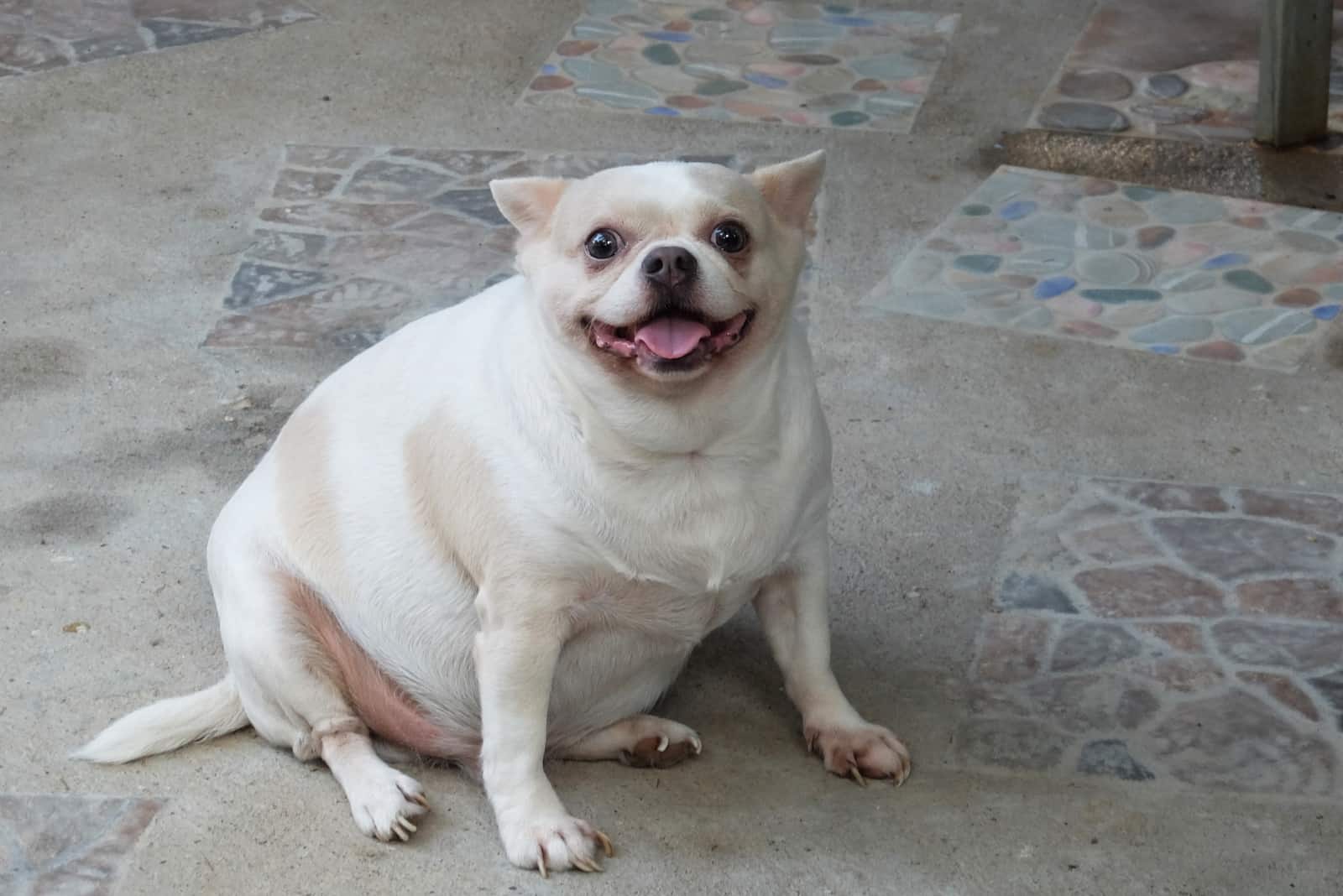
If you can’t see or even feel their ribs and spine, then the chances are they’ve packed on too much weight, and you have a fat Chihuahua. You might notice that they are reluctant to go for walks or to play. Their belly will be rounded and full, and possibly closer to the ground than usual.
You should be able to see their waist, and their chest should be wider than the abdomen, but obese dogs generally have no distinction between the two.
They will lack energy and sleep more. They will pant a lot, dragging behind when you do manage to get them outdoors.
You might even notice that their face is larger and rounder.
However, the easiest way to tell is by weighing your dog. A healthy Chihuahua weighs between 3 and 7 lbs, depending on the size of its frame. If your dog weighs something like 12 lbs, then it is very overweight, and probably obese.
To be honest, it’s pretty easy to spot the signs of obesity. The real trick is catching it before it gets too bad.
What Is Overweight For A Chihuahua?
Anything over 7 lbs is really too much. There are reports of these tiny dogs weighing 12, or 15lbs or more. A search for the fattest Chihuahua shows that one poor dog, Gracie, reached an astonishing 42 lbs, which is tragically obese.
Chihuahuas should ideally weigh between 3 and 6 lbs, with 7 lbs being the limit. Obviously, all dogs are different, and it depends on their frame, but with a bit of common sense and some advice from a vet, you can find the ideal weight for your pooch.
How To Make A Chihuahua Lose Weight

Thankfully, weight loss is fairly straightforward for most dogs.
The main thing is to give them fewer calories and gradually increase their exercise to achieve a caloric deficit. They must burn off more calories than they consume each day.
It is important to do this slowly, as drastic, rapid change can cause irreparable damage.
However, the biggest step may be connected with your attitude.
As we’ve established, canine obesity is overwhelmingly due to owners feeding their dogs too much. We don’t weigh out their food. We give them a bit extra, ‘free-feed’, and give them all manner of treats. And we think that these are ways of showing our love.
Conversely, we might believe that reducing their food and withholding treats is somehow punishing our pooches, and it makes us feel bad.
That has to change!
A healthy dog with an ideal weight has a better chance of living a long and happy life. Helping them to achieve this is the best way to show that we love them.
So, how do you get your fat Chihuahua to lose weight?
Here’s a basic guide to help you:
• Begin by getting everyone on board, whether they’re family living with you or regular visitors. You don’t want one person spoiling it by sneaking them treats!
• Appoint one person as the official feeder.
• Any treats should be extracted from the daily food allowance, not given in addition.
• Remove the dog from the room while you are eating. If you can’t see them, and they can’t see you, then there’s less chance of someone caving in to those pleading eyes and tossing them scraps of dinner.
• Weigh out their food carefully and avoid free-feeding (leaving dry food out all day for them to eat as they please). If you need guidance on quantities, your vet will be able to advise you.
• Weigh your dog regularly and keep a record of this. Also, keep a record of how much food you give them. Remember, you are feeding them for the weight they should be, not the weight that they are at the moment.
What you feed your dog is as important as how much you feed them.
Rice and most grains are not the best foods for dogs, so avoid dog food that is packed with these carb-based fillers. Ideally, you should use fresh food with a balance of quality protein, with moisture and fiber that will satisfy your dog’s appetite.
Some experts recommend feeding small amounts several times a day. Smaller meals require more energy to process, which burns calories.
Instead of processed dog treats that are often high-calorie and high-carb, use veggies or fruit (broccoli, green beans, baby carrots, bananas, blueberries, apple, etc.). Apple and bananas should be used sparingly because of the high sugar content.
Peanut butter is a favorite treat for many dogs, but this can contain around 100 calories in each spoonful. This should be avoided if possible, or at least reduced to a very rare treat.
You can also reward your pooch in other ways that don’t use food. Show them more attention, give them a belly rub or a cuddle, take them out for an extra playtime –- anything to improve your bond without resorting to edible treats.
The next thing to do is to increase the amount of exercise your dog gets. This should be done gradually, perhaps increasing a short walk from 15 to 20 minutes, to begin with.
These tiny dogs need at least 30 minutes of exercise a day to stay healthy. If they’re not getting this, then it’s no wonder they are overweight. Thirty minutes is the minimum;, they should ideally get around 45 minutes each day to use up energy and get the mental stimulation they need from all that enthusiastic sniffing!
What Is The Average Life Expectancy For A Chihuahua?
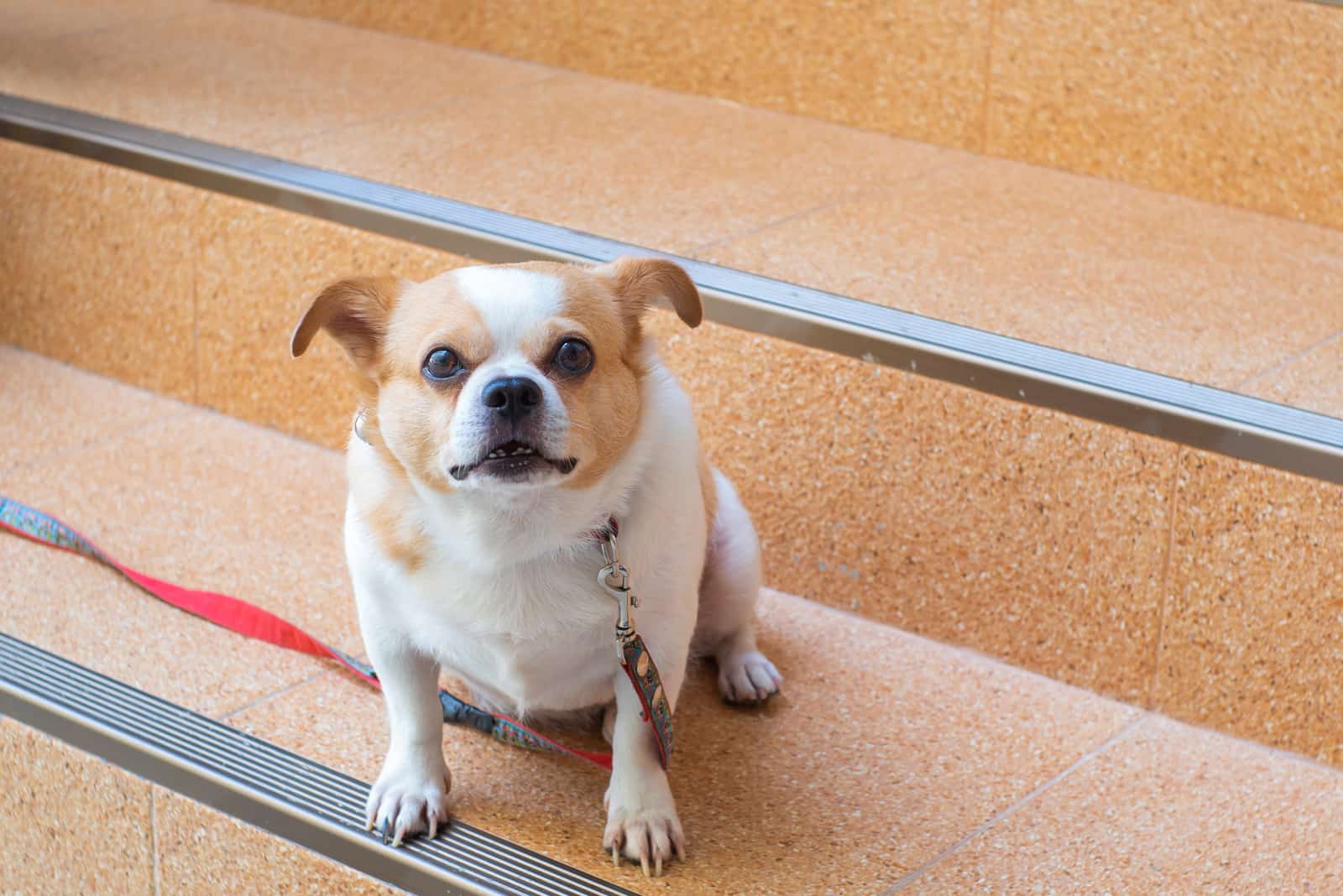
These small dogs are famous for their long lifespan, with an average longevity of between 14 and 18 years! That’s much more than the average of 10 to 13 years that covers all dog breeds.
And it is not uncommon for Chihuahuas to live well beyond this eighteen-year limit. There are reports of these dogs living into their early twenties.
It’s a bit of a mystery as to why they live so long, as smaller animals generally tend to have a much shorter lifespan in the wild. Take the gerbil, for instance, which has a lifespan of 2 to 4 years. A wild buffalo will live between 15 and 25 years, and a blue whale as much as 80 or 90 years.
Experts think (but they don’t know for sure!) that it may be something to do with the way that the dogs have been bred by humans over the centuries. This has resulted in a dog that grows very slowly, fending off age-related sickness and problems.
Whatever the reason, you can be sure that your best friend will be around for a while, especially if you look after them. And this means watching their weight!
The Last Word
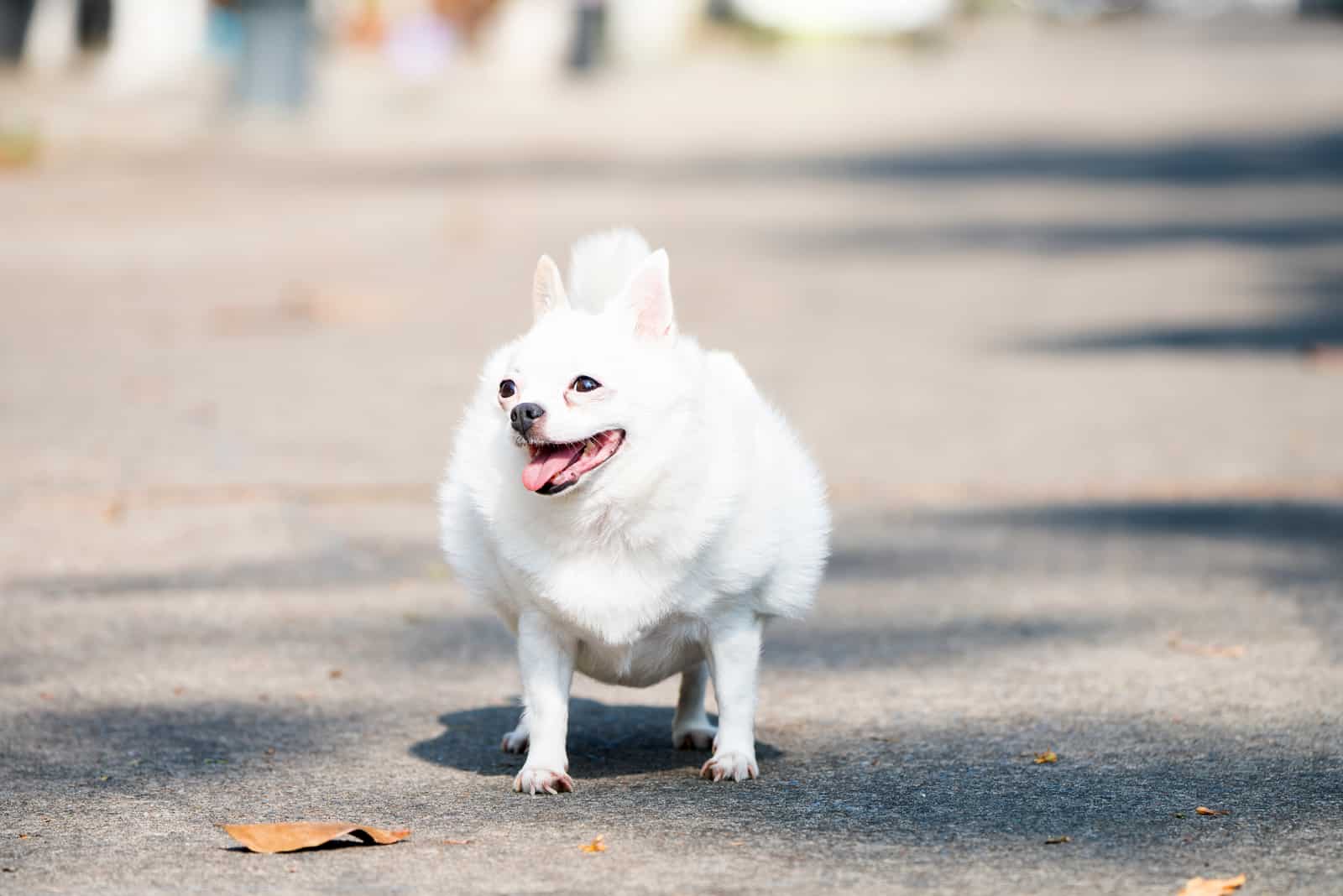
If you Google funny dog or cute dog, you’ll most likely get hundreds of results with TiktTok videos or memes featuring obese dogs, including fat Chihuahuas.
Yes, some of these might be cute to see, but the reality is that obesity makes them suffer and will shorten their lives. Most dogs are overweight because well-meaning owners believe that they are being kind to their beloved pooch, when in fact, the opposite is true.
As responsible dog owners, it’s our duty and responsibility to look after their health by providing a balanced diet and plenty of exercise.
If you suspect that your dog is overweight or obese, the first thing you should do is to take them to the vet to rule out any medical reasons.
Once this is done, use the guide given above to help your dog to lose weight. It might be a struggle at first – for you as well as your fat Chihuahua – but it will soon become easier as you see the results appear.
Within a few weeks, you will have a happier, healthier dog. They will seem more active, and they will probably sleep less and be eager to head out for walks. And if that wasn’t enough, they are less likely to get sick and will be around for much longer, which is the best reward of all.
Read Next:
• 6 Actual Types Of Chihuahuas That Are Not Mixes
• What Causes Crying Chihuahua & How You Can Help Your Dog
